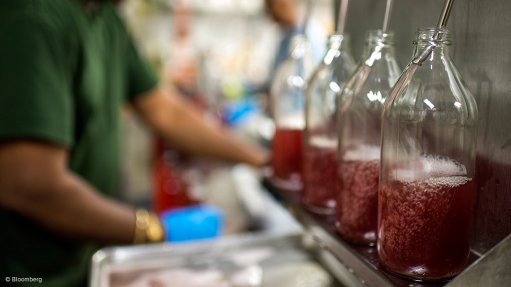
CLEAN-TRACE
The machine uses bioluminescence to detect how clean a surface is
Photo by: Bloomberg
International company 3M launched a new Clean-Trace hygiene monitoring and management device onto the South African market last month. The device – especially suitable for use in the food and beverage industry – uses adenosine triphosphate (ATP) bioluminescence detection and verifies that surfaces, including metal, plastic or any other used in the industry, have been effectively cleaned within ten seconds.
3M food safety technical manager Dr Louisé Mare explains that the bioluminescence detection device was created after scientists studied the way in which fireflies were able to create light. By using ATP combined with luciferase enzyme, light emitted through the swab and detected with the Clean-Trace can determine how clean a surface is.
“ATP can be present in product residue, protein residue as well as bacteria and all living cells. When the swab is rubbed across a surface, it picks up the ATP. “The swab contains luciferase enzyme in the bottom and if the ATP molecules comes in contact with this enzyme, it emits a light reaction. “The luminometer measures the light and the brighter the light, the more contaminated the swabbed surface is,” she explains.
Mare points out that the bioluminescence technology is not new to the industry, as the previous Clean-Trace device used the same technology. However, the new Clean-Trace has a redesigned software, with wireless connectivity, and can withstand more rugged use, with it being impact resistant and able to function in temperatures of up to 45 ºC.
“3M asked around 1 000 customers globally to see what they required. “Firstly, ease of use had to increase; secondly, robustness needed to improve. These machines are being used in food factories where people accidentally drop them from heights or they can be knocked over.”
Further, the Clean-Trace uses photomultiplier detectors, usually used in the medical and aerospace industries to induce the bioluminescence used for detection. Mare points out that data is an important aspect when verifying cleaning, so data needs to be accurate and trustworthy to deliver confidence.
“The new system builds on the quality of the previous-generation model that, in a third-party lab study, done by the Cardiff Metropolitan University, in the UK, gave the most precise, consistent results across time and temperature, and between swabs, compared with other leading systems,” she concludes.